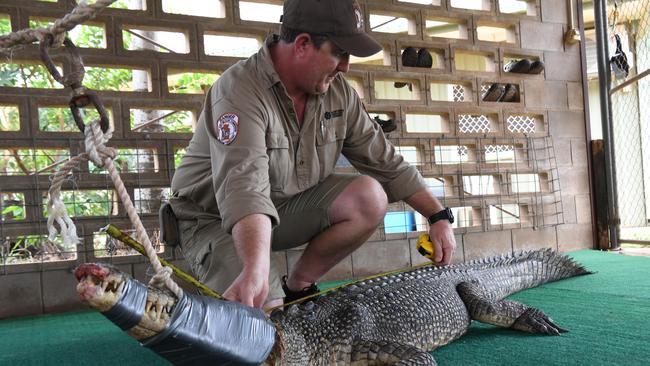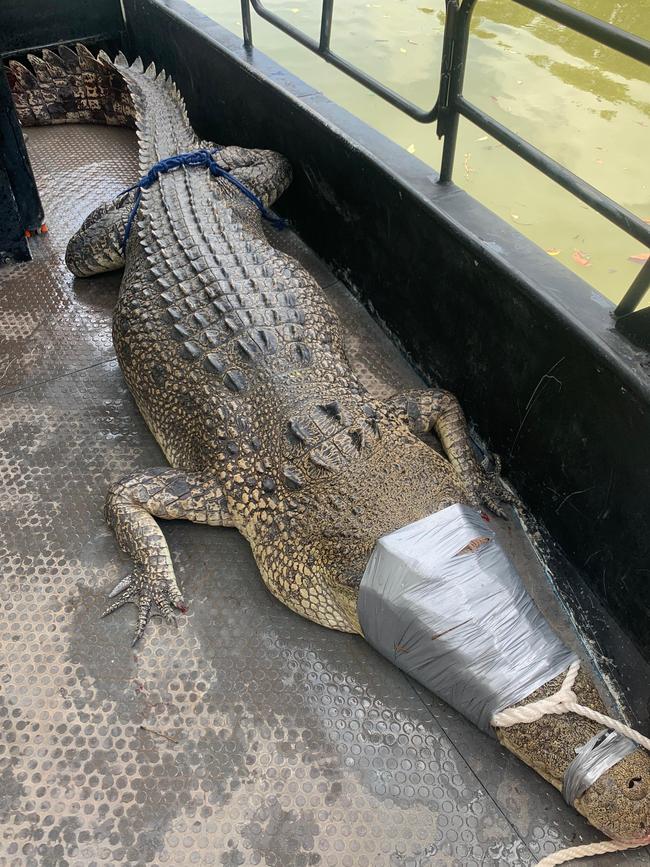New data has revealed nearly one croc a day is removed from Top End waters
Data for this year has revealed how many crocs have been captured this year, with one of the latest a whopping 3.78m saltie.
Northern Territory
Don't miss out on the headlines from Northern Territory. Followed categories will be added to My News.
NEARLY a croc a day is removed from Top End waterways, according to 2021 data.
This year, 306 crocodiles were caught under the Department of Environment, Parks and Water Security (DEPWS) capture and management program. The latest crocodile, a 3.78m saltie, was caught in Buffalo Creek on Wednesday.
The program removed almost a third of its count from Darwin Harbour, with 83 captured in the upper harbour and 44 in the lower harbour.
There was also a significant rise in the number of animals captured within what the department identifies as a management zone, up from 49 in 2020 to 72 in 2021.
Wildlife Ranger Ian Hunt said a busy wet season in January and February saw numbers incline early but overall numbers had remained consistent with previous years.

“We’ve removed crocodiles from all creeks and river systems … our largest crocodile this year was just over 4½ meters and that was removed from the west section of the Darwin Harbour,” Mr Hunt said. “We removed six crocodiles from the creek along Gunn Point Road, which is concerning because a dog was taken by a croc from there … which is a real tragedy.” Mr Hunt said despite the multiple warnings of crocs in the area, people were still swimming or allowing their pets to swim.
Thanks to the heavy rains over the Christmas period waterholes are again filling, which the department has said creates a “crocodile highway”.
Mr Hunt has pleaded with Territorians to be croc-wise.
“With the wet season coming creeks are going to be flooding again and crocs will be on the move,” he said.
“People need to be croc-wise.”

The department has 20-25 permanent traps it uses around Darwin Harbour and several mobile traps it uses when crocodiles are reported.
Mr Hunt said the intricacies of the crocodile management program included working with scientists and recording data about the animals trapped. “Our program can involve going out to people’s properties, using our vessels to access certain creeks and rivers, rebaiting our traps, removing crocodiles, entering data, working with scientists and doing [surveillance] surveys,” he said. “We all know what a crocodile is capable of, the croc still surprises us so we need to be vigilant all the time where we’re removing them from our traps.”




